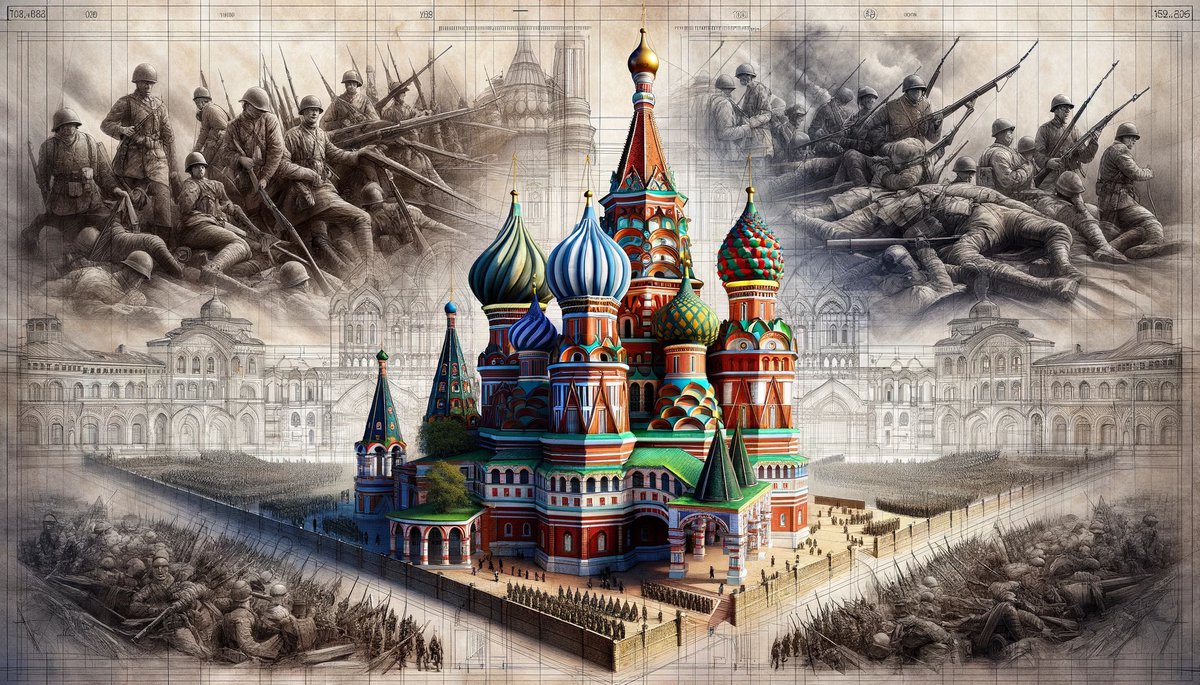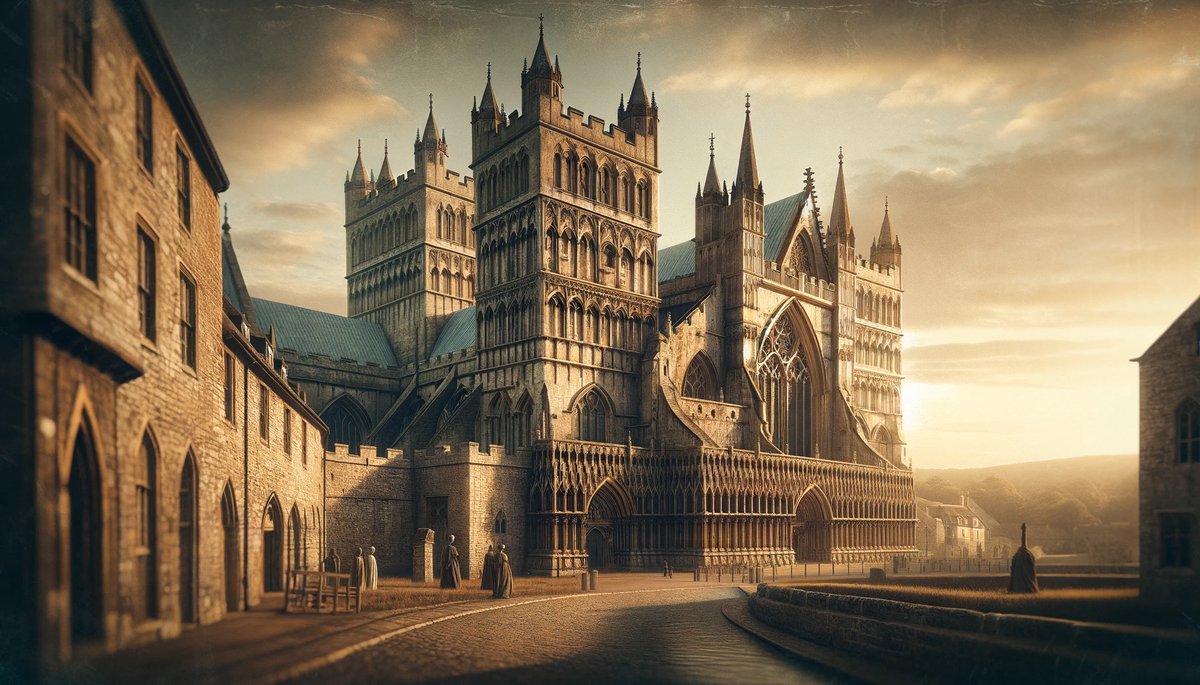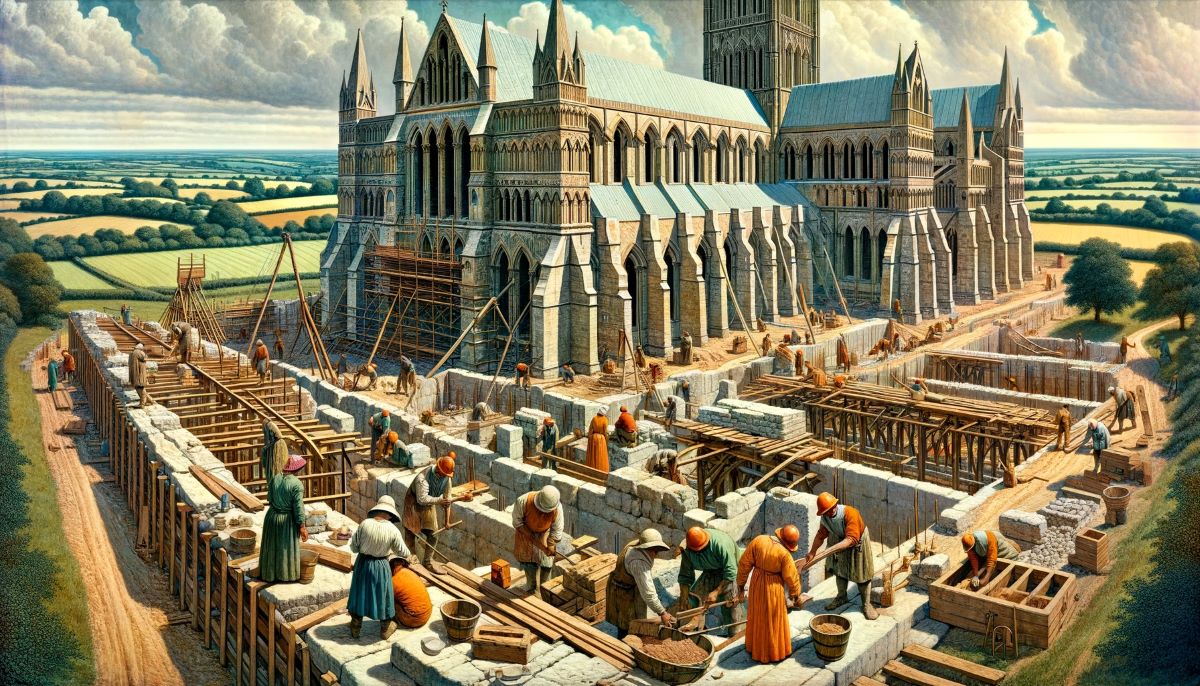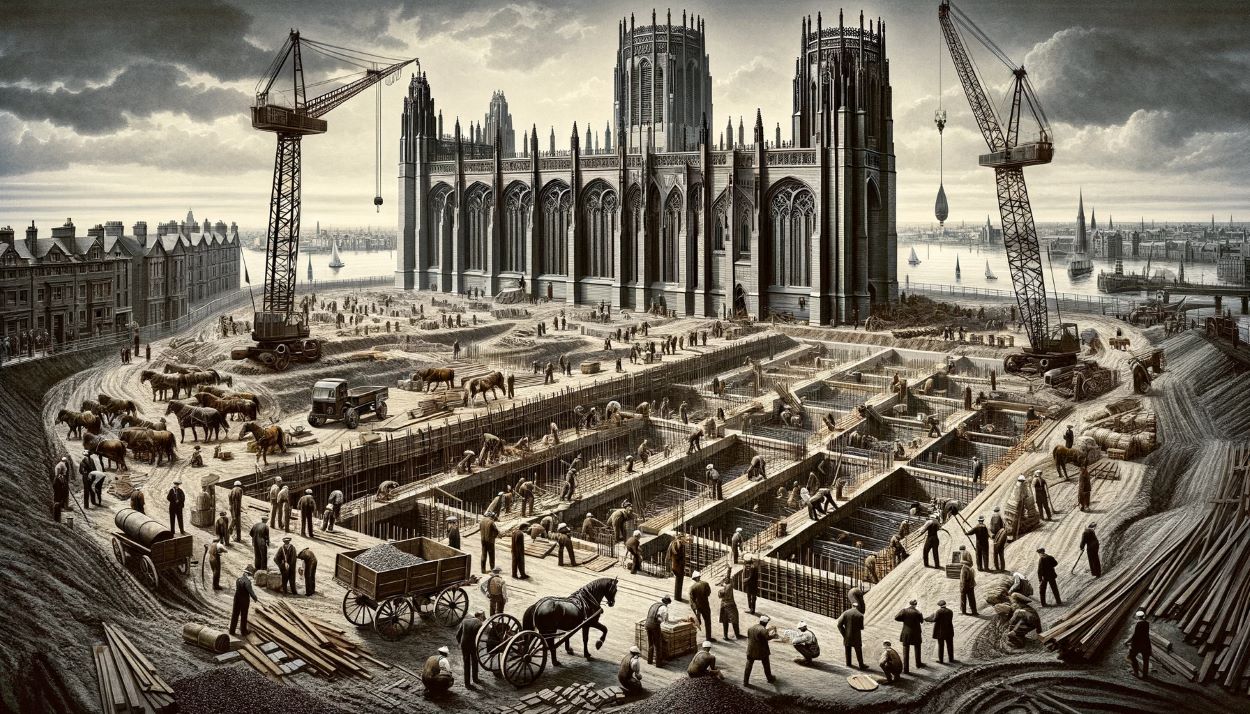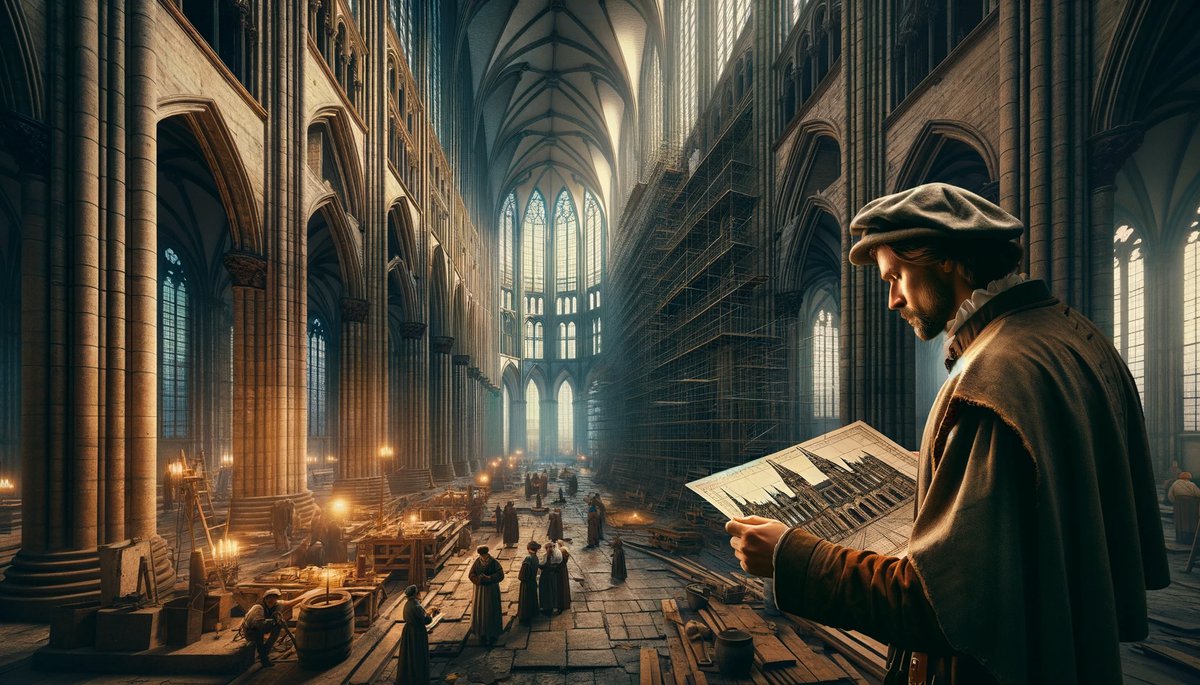Home>Arts and Culture>Why Was The Milan Cathedral Built
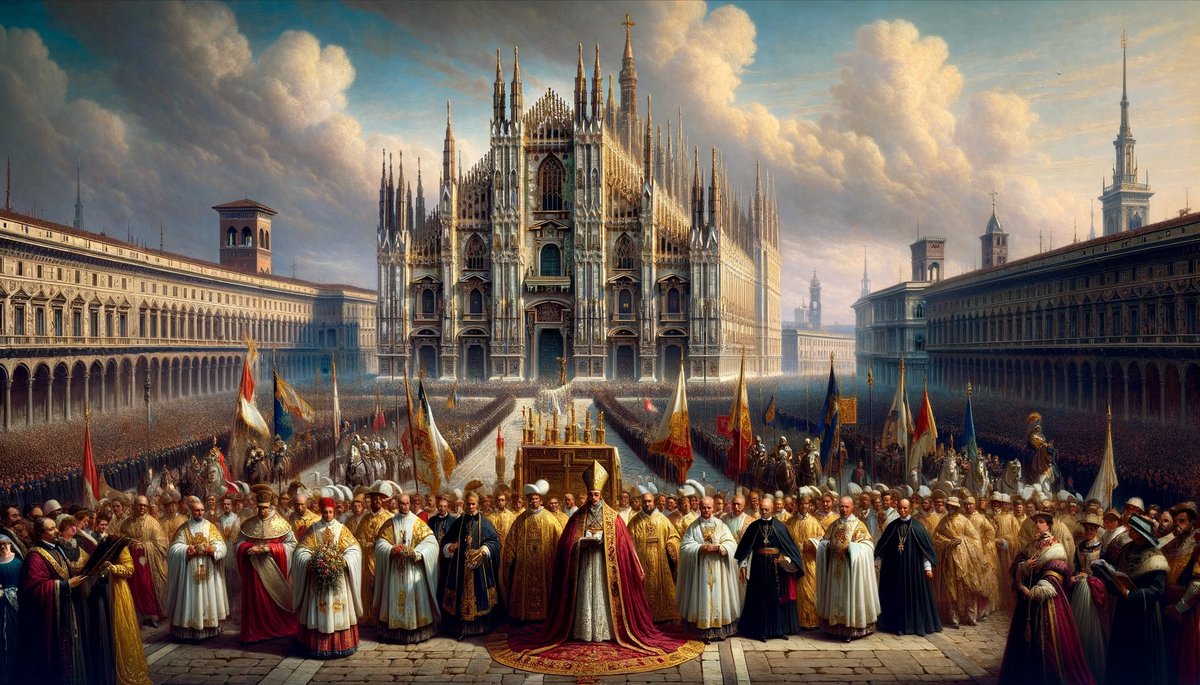

Arts and Culture
Why Was The Milan Cathedral Built
Published: February 17, 2024
Peter Smith, Editorial Director at Christian.net, combines deep insights into faith, politics, and culture to lead content creation that resonates widely. Awarded for his contributions to religious discourse, he previously headed a major organization for religious communicators, enhancing dialogue on faith's societal impacts.
Discover the history and significance of the Milan Cathedral, a masterpiece of arts and culture, and learn about the reasons behind its construction. Uncover the architectural marvel and cultural heritage of this iconic landmark.
(Many of the links in this article redirect to a specific reviewed product. Your purchase of these products through affiliate links helps to generate commission for Christian.net, at no extra cost. Learn more)
Table of Contents
Introduction
The Milan Cathedral, also known as the Duomo di Milano, stands as a testament to human ingenuity and artistic prowess. This magnificent architectural marvel has captured the imagination of countless individuals for centuries, drawing visitors from around the world to marvel at its grandeur. The story of the Milan Cathedral is one that intertwines history, art, religion, and culture, making it a symbol of Milan's rich heritage and a cornerstone of Italian identity.
As we delve into the depths of this awe-inspiring structure, we will uncover the multifaceted significance of the Milan Cathedral. From its historical importance to its architectural and cultural impact, this iconic edifice has left an indelible mark on the fabric of Italian society and the broader landscape of European art and architecture.
Join me on a journey through time and space as we unravel the mysteries and marvels of the Milan Cathedral, exploring the intricate tapestry of history, spirituality, and human achievement woven into its very foundation.
Read more: Why Was Salisbury Cathedral Built
The Importance of Milan Cathedral in Italian History
The Milan Cathedral holds a pivotal role in Italian history, serving as a symbol of the country's rich cultural and religious heritage. Its construction, spanning over six centuries, reflects the enduring commitment of generations to erect a monument that would stand the test of time. The cathedral's significance transcends mere architectural prowess, as it embodies the collective aspirations, triumphs, and tribulations of the Italian people.
From a historical perspective, the Milan Cathedral stands as a testament to the power and influence of the Church in shaping the socio-political landscape of Italy. Its construction commenced in 1386, during a period marked by intense rivalries between the city-states of the Italian peninsula. The cathedral's grandeur was not only a reflection of Milan's burgeoning prosperity but also a statement of the city's cultural and religious prominence.
Furthermore, the cathedral's association with prominent historical figures, such as Napoleon Bonaparte, who was crowned King of Italy within its hallowed walls, underscores its role as a witness to pivotal moments in Italian history. The cathedral's enduring presence has provided a tangible link to the past, allowing subsequent generations to connect with their roots and gain a deeper understanding of the forces that have shaped Italy's trajectory.
Moreover, the Milan Cathedral has been a focal point for significant events, including religious ceremonies, royal coronations, and cultural celebrations, further solidifying its position as a cornerstone of Italian history. Its architectural magnificence has drawn admiration from across the globe, attracting visitors who seek to immerse themselves in the rich tapestry of Italian history and experience firsthand the legacy of human endeavor encapsulated within its walls.
In essence, the Milan Cathedral stands as a living chronicle of Italian history, embodying the resilience, creativity, and spiritual devotion of the Italian people. Its towering spires and intricate façade serve as a testament to the enduring legacy of a nation that has left an indelible mark on the world stage. As such, the Milan Cathedral remains an enduring symbol of Italy's past, present, and future, a beacon of inspiration for generations to come.
The Architectural Significance of Milan Cathedral
The Milan Cathedral stands as a crowning achievement of Gothic architecture, captivating the imagination with its awe-inspiring design and intricate detailing. Its architectural significance extends far beyond mere aesthetic appeal, encompassing a myriad of technical, artistic, and symbolic elements that have solidified its status as a masterpiece of human creativity.
At the heart of the cathedral's architectural prowess lies its soaring spires, reaching towards the heavens in a testament to the ingenuity of medieval builders. The intricate network of flying buttresses, ribbed vaults, and pointed arches not only lends the structure its ethereal beauty but also serves a functional purpose, distributing the immense weight of the edifice and allowing for the creation of expansive interior spaces flooded with natural light.
The exterior façade of the Milan Cathedral is adorned with a breathtaking array of sculptures, depicting biblical narratives, saints, and symbolic motifs. Each intricately carved figure and embellishment serves as a visual symphony, inviting visitors to embark on a spiritual and artistic journey. The sheer scale and complexity of the façade reflect the unwavering dedication of countless artisans and craftsmen who dedicated their lives to adorning the cathedral with unparalleled grandeur.
Moreover, the interior of the cathedral is a testament to the harmonious fusion of architectural elements and artistic expression. The majestic nave, flanked by rows of towering columns, leads the eye towards the magnificent altar, while the stained glass windows bathe the space in a kaleidoscope of vibrant hues, infusing the atmosphere with a sense of divine transcendence.
The architectural significance of the Milan Cathedral extends beyond its physical form, encapsulating the spirit of an era and the collective aspirations of a society. It stands as a living testament to the boundless potential of human creativity, inspiring awe and reverence in all who behold its splendor.
In essence, the Milan Cathedral's architectural significance transcends the boundaries of time and space, serving as a timeless testament to the enduring legacy of Gothic architecture and the indomitable spirit of human ingenuity. It remains a beacon of inspiration, inviting visitors to marvel at the intersection of art, faith, and engineering, and to contemplate the profound impact of architectural marvels on the human experience.
The Religious and Cultural Significance of Milan Cathedral
The Milan Cathedral stands as a profound symbol of religious devotion and cultural identity, weaving together the spiritual aspirations of the faithful and the artistic heritage of a nation. As the seat of the Archbishop of Milan, the cathedral holds immense religious significance, serving as a sacred space for worship, contemplation, and pilgrimage. Its towering spires and majestic interior evoke a sense of awe and reverence, drawing pilgrims and visitors from around the world to partake in its spiritual aura.
The cathedral's religious significance is further underscored by its status as a repository of sacred relics and artifacts, including the renowned statue of St. Bartholomew flayed, which adorns the exterior of the edifice. These relics serve as tangible links to the rich tapestry of Christian tradition, offering a glimpse into the spiritual heritage that has shaped the beliefs and practices of countless individuals over the centuries.
Moreover, the Milan Cathedral has played a pivotal role in shaping the cultural landscape of Milan and Italy as a whole. Its architectural magnificence and historical resonance have inspired generations of artists, writers, and thinkers, permeating the collective consciousness with a profound sense of cultural pride and identity. The cathedral's influence extends beyond the realm of religion, permeating the realms of literature, art, and popular culture, where it continues to serve as a wellspring of inspiration and creativity.
Furthermore, the cathedral's cultural significance is evident in its role as a venue for musical performances, art exhibitions, and cultural events, fostering a vibrant tapestry of creative expression that resonates with visitors from all walks of life. Its enduring presence has become synonymous with the cultural fabric of Milan, embodying the city's rich artistic legacy and serving as a testament to the enduring power of human creativity.
In essence, the Milan Cathedral stands as a testament to the inseparable bond between religion and culture, intertwining the spiritual aspirations of the faithful with the artistic and cultural heritage of Italy. Its towering spires and resplendent interior continue to inspire awe and reverence, serving as a timeless beacon of faith and creativity that transcends the boundaries of time and space.
The Construction Process of Milan Cathedral
The construction of the Milan Cathedral, or Duomo di Milano, stands as a testament to human perseverance and unwavering dedication. Spanning over six centuries, the process of erecting this architectural masterpiece was a monumental endeavor that tested the limits of medieval engineering and craftsmanship.
The origins of the cathedral's construction can be traced back to 1386 when the foundation stone was laid, marking the commencement of a project that would transcend generations. The sheer scale and complexity of the undertaking meant that the cathedral would become a living testament to the evolving aspirations and capabilities of successive generations of builders, architects, and artisans.
The construction process unfolded in multiple phases, each marked by its own set of challenges and triumphs. The cathedral's intricate design, characterized by its soaring spires, elaborate façade, and expansive interior, demanded a level of precision and ingenuity that pushed the boundaries of medieval construction techniques.
One of the most remarkable aspects of the construction process was the utilization of Candoglia marble, quarried from the foothills of the Alps. This prized material not only endowed the cathedral with its distinctive luminous appearance but also presented a logistical feat, requiring the transportation of massive blocks of marble over considerable distances to reach the construction site.
The cathedral's construction was a labor-intensive endeavor, relying on the expertise of master builders, stonemasons, and artisans who dedicated their lives to realizing the grand vision of the cathedral's architects. The intricate sculptures, ornate decorations, and delicate tracery that adorn the cathedral's exterior and interior stand as a testament to the unwavering commitment of these craftsmen, whose meticulous work imbued the edifice with unparalleled beauty and grandeur.
Despite facing numerous setbacks, including financial constraints, political upheavals, and the ravages of war, the construction of the Milan Cathedral persisted, driven by an unyielding determination to create a monument that would stand as a testament to human achievement. The cathedral's completion in 1965 marked the culmination of centuries of labor and dedication, solidifying its status as a timeless masterpiece that continues to inspire awe and reverence to this day.
In essence, the construction process of the Milan Cathedral stands as a testament to the indomitable spirit of human endeavor, showcasing the transformative power of perseverance, creativity, and collective vision. It remains a living testament to the enduring legacy of human ingenuity and serves as a poignant reminder of the profound impact of monumental undertakings on the fabric of history and culture.
Read more: Why Was The Chartres Cathedral Built
The Influence of Milan Cathedral on European Architecture
The Milan Cathedral, with its resplendent Gothic architecture and towering spires, has exerted a profound influence on the trajectory of European architectural development. Its awe-inspiring design, intricate detailing, and monumental scale have served as a wellspring of inspiration for architects, builders, and artisans across the continent, leaving an indelible mark on the evolution of architectural styles and techniques.
One of the most notable ways in which the Milan Cathedral has influenced European architecture is through its innovative use of structural elements. The cathedral's soaring spires, adorned with delicate tracery and intricate sculptures, set a new standard for verticality and grandeur, inspiring subsequent generations of architects to push the boundaries of height and scale in their own creations. The intricate network of flying buttresses and ribbed vaults, designed to support the immense weight of the edifice while allowing for expansive interior spaces, became a hallmark of Gothic architecture and a defining feature of countless cathedrals and churches throughout Europe.
Furthermore, the Milan Cathedral's elaborate façade, adorned with a breathtaking array of sculptures and decorative elements, set a precedent for the integration of artistic expression into architectural design. The meticulous craftsmanship and attention to detail displayed in the cathedral's exterior decorations became a source of emulation for artisans and sculptors, leading to a proliferation of ornate façades and intricate embellishments in European architecture.
In addition to its technical and artistic innovations, the Milan Cathedral's status as a pilgrimage site and cultural landmark has contributed to its enduring influence on European architecture. As a focal point for religious devotion and artistic expression, the cathedral has attracted visitors and pilgrims from across the continent, serving as a nexus for the exchange of architectural ideas and stylistic influences. The widespread admiration for the cathedral's design and construction techniques has permeated the collective consciousness of European architects, fostering a spirit of emulation and reinterpretation that has left an indelible imprint on the architectural landscape.
In essence, the Milan Cathedral stands as a beacon of innovation and creativity, its influence reverberating across the expanse of European architecture. Its towering spires, intricate façade, and harmonious fusion of artistic and structural elements have set a standard of excellence that continues to inspire and inform architectural endeavors to this day. As such, the cathedral's enduring legacy serves as a testament to the transformative power of architectural marvels in shaping the course of European architectural history.
Conclusion
In conclusion, the Milan Cathedral, or Duomo di Milano, stands as a testament to the enduring legacy of human creativity, perseverance, and spiritual devotion. Its multifaceted significance encompasses the realms of history, architecture, religion, and culture, weaving together a narrative of profound importance in the tapestry of Italian and European heritage.
The cathedral's towering spires, resplendent façade, and majestic interior bear witness to the unwavering commitment of generations to erect a monument that transcends the boundaries of time and space. From its humble beginnings in the 14th century to its completion in the 20th century, the construction process of the cathedral reflects the collective aspirations and triumphs of the Italian people, serving as a living chronicle of the nation's history and cultural identity.
Furthermore, the architectural significance of the Milan Cathedral extends far beyond its physical form, encapsulating the spirit of an era and the collective aspirations of a society. Its soaring spires, intricate tracery, and elaborate decorations have set a standard of excellence that continues to inspire architects and artisans across the continent, leaving an indelible mark on the evolution of European architectural styles and techniques.
The religious and cultural significance of the cathedral further underscores its role as a symbol of spiritual devotion and artistic expression. As the seat of the Archbishop of Milan, the cathedral has served as a sacred space for worship, contemplation, and pilgrimage, drawing visitors from around the world to partake in its spiritual aura. Its influence extends beyond the realm of religion, permeating the realms of literature, art, and popular culture, where it continues to serve as a wellspring of inspiration and creativity.
In essence, the Milan Cathedral remains a timeless testament to the enduring legacy of human ingenuity and serves as a poignant reminder of the profound impact of monumental undertakings on the fabric of history and culture. Its towering spires and resplendent interior continue to inspire awe and reverence, serving as a timeless beacon of faith and creativity that transcends the boundaries of time and space. As such, the cathedral stands as a living testament to the enduring legacy of Gothic architecture and the indomitable spirit of human ingenuity, inviting visitors to marvel at the intersection of art, faith, and engineering, and to contemplate the profound impact of architectural marvels on the human experience.

